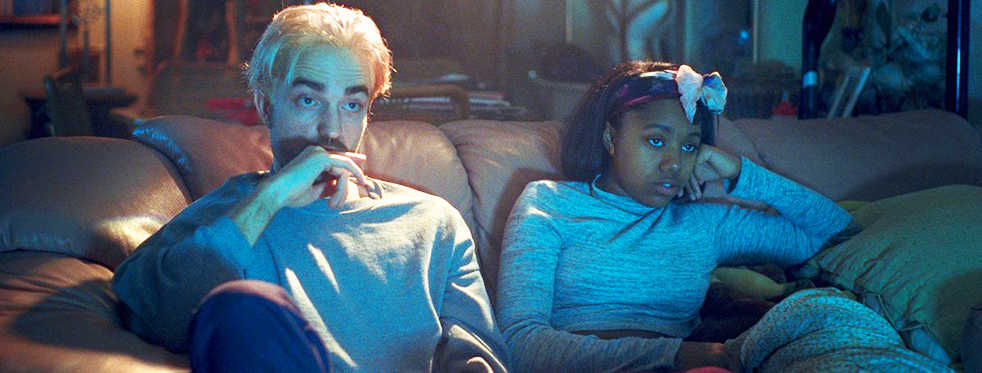Hollywood loves to romanticize the criminal: the good man doing bad things. The thug with a heart of gold, forced into crime, is left with no options but to hustle his way out of a predicament. In their newest film, “Good Time,” the indie filmmakers Josh and Ben Safdie attempted to subvert this prevalent archetype.
The film takes place over one day in the lives of low-life New York hustler, Constantine “Connie” Nikas (Robert Pattinson, “Twilight”), and his mentally disabled brother, Nick (Ben Safdie, “Daddy Longlegs”), as they deal with the consequences of a robbery gone pathetically wrong. Pattinson’s Connie is impulsive and manipulative. While he is not that bright, he establishes early in the film that he views himself as his brother’s protector.
After forcibly ejecting the impressionable Nick from an uncomfortable therapy session in the movie’s opening scene, Connie leads the duo into a poorly planned bank robbery where Nick is arrested. The remainder of the film follows Connie as he improvises his way through the underbelly of New York to scrounge up $10,000 for his brother’s release.
Connie is fashioned as the film’s protagonist, and the Safdies toy with viewers’ expectations of his behavior to further their commentary. As Connie scrambles across Brooklyn, he picks up various companions: his histrionic girlfriend, a teenage girl, a drug dealer and a recidivist with less common sense than Connie.
He consistently manages to abuse, manipulate and abandon all of them as he wings his way from place to place, trying to enact some farfetched plan to save his brother and evade incarceration himself. Yet, the audience still manages to root for him: viewers believe him to be better than his victims. He is fighting for a “noble” cause — for his brother — and that must excuse all of his misdeeds.
Much of the performance’s appeal falls on the talented shoulders of Pattinson, who has, over the past few years, cemented himself as one of the most capable actors in indie cinema right now. Transformed by a scruffy goatee and unkempt bleached hair, he humanizes the foolish Connie, portraying him at once as both sincere and irredeemably corrupted by a life of crime that he cannot seem to escape.
However, most of the film’s power and emotional heft stems from its phenomenal soundtrack and direction. The camera is anxious and restless; it bobs and weaves, shakes and shivers. A significant portion of the shots in the movie are close-ups, further cementing the heightened sense of awareness and desperation that both Nick and Connie experience.
Simultaneously, the prevalence of close shots also highlights how oblivious Connie can sometimes be to the impacts of his impulses on himself and others. He is driven only by rabid desperation to evade arrest and free his brother, unaware of the ultimate futility of his actions.
This anxiety is only heightened by the color palette that the Safdies chose. The film, taking place largely at night, is awash with neon hues and half-shadows. Pale reds and greens trace the characters, and police sirens
illuminate the night. Much of the movie’s light sources are police sirens, exemplifying how Connie and criminals like him truly have no place even in the underworld they used to call home. Adorned in neon frenzy, Connie’s desperation translates into constant thrills for the audience.
The soundtrack, produced by Oneotrix Point Never, is a haunting, frenetic electronic composition. As the music drones and swells, it tracks Connie through each twist and turn of the plot, overwhelming both viewers and characters with sensation until there are no more twists to take. These technical aspects of the film are exhilarating. The soundtrack burrows under one’s skin and into one’s bones.
The film stresses viewers and makes them jitter because, as much as they desperately hope that there may be a way out for Connie and his kind of romantic criminal, there is none. By the film’s ending, viewers realize that, for all his delusions of nobility and self-sacrifice, Connie is a selfish man whose life of crime harms all he touches, especially his brother. There is nothing romantic about Connie’s actions.
While the Safdies made this point clear by the end of the film, the plot occasionally meanders, jumping on distractions that add unnecessary levity to an otherwise somber film. Occasionally, the plot twists simply for the sake of twisting, and these diversions occlude a narrative that otherwise could have been very powerful.
These gaps in the overall commentary could have been avoided if the Safdies had produced a slightly stronger and tighter script that better focused on Connie’s flawed character. Nonetheless, “Good Time” is thrilling ride that all cinephiles should watch at Landmark Midtown Art Cinema or Regal Atlantic Station.
